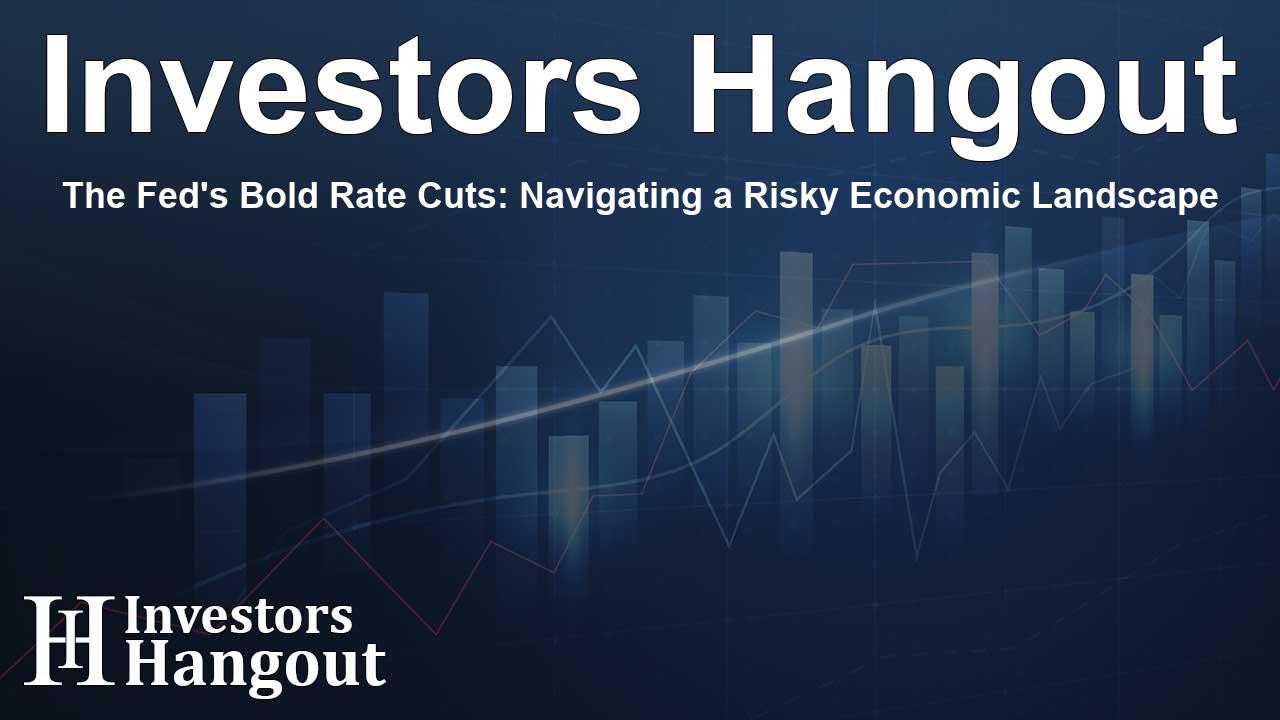The Fed's Bold Rate Cuts: Navigating a Risky Economic Landscape

Navigating the Fed's Recent Decisions
The Federal Reserve’s choice to embark on a significant rate-cutting journey raises numerous questions about the health of the economy. In a surprising move, the Fed announced a substantial rate cut, which experts believe may lead to unintended consequences. The decision comes at a time when many are pointing out that the economy shows signs of resilience.
The Impact of a Jumbo Rate Cut
On September 18, the Fed implemented a 50 basis point rate cut, the first reduction since March 2020. This bold step signals the start of a new easing cycle, with speculations around potential further reductions later in the year. However, such an aggressive approach, especially when the economy appears to be functioning well, raises concerns.
Concerns About Inflation Resurgence
MRB Partners has voiced apprehensions that the Fed may be misreading the economic landscape. Their analysis suggests that if the economy continues its robust trajectory, the central bank may need to reverse its course on the recent rate cuts sooner than anticipated. This echoes a previous policy error from 2021, where the Fed had to adjust its strategies based on unexpectedly strong economic indicators.
Current Economic Indicators
The current state of consumer spending serves as a barometer for economic health, indicating strength backed by a solid labor market and increases in real incomes. With ongoing consumer demand, there are fears that inflation might resurge, reversing the hard-won stability achieved in recent years.
Factors Influencing Inflation
Multiple elements could perpetuate inflation, according to economists. A tight labor market is expected to drive wages higher, which could, in turn, lead to increased consumer spending. On top of that, persistent supply chain disruptions and geopolitical tensions are likely to exacerbate volatility in commodity prices, contributing to inflationary pressures.
The Path Ahead for the Federal Reserve
The Fed's strategy to implement such drastic rate cuts could potentially hinder its capabilities in maintaining price stability. The delicate balance between fostering economic growth and controlling inflation presents a significant challenge. The strong demand backdrop complicates their policy-making efforts, as decisions are made that could have far-reaching implications.
Given this framework of resilient economic indicators and the threats of renewed inflation, the Fed's future actions will require careful navigation. Each policy decision will need to consider the complex interplay of factors influencing the economy. The risk remains that if demand continues to outpace supply, the Fed could face mounting pressures to adapt its monetary policy sooner rather than later.
Frequently Asked Questions
Why did the Fed implement such a large rate cut?
The Fed decided on a significant rate cut to stimulate economic activity in the face of potential inflationary pressures, despite signals that the economy is performing well.
What are the consequences of the Fed's rate cuts?
The immediate consequence could be a resurgence in consumer spending, but there is also the potential risk of increasing inflation if demand remains high.
How might the Fed's actions affect the economy in the long run?
In the long run, the Fed's aggressive cuts could complicate their ability to maintain price stability, potentially leading to rapid adjustments in the monetary policy if inflation resurfaces.
What indicators suggest that inflation might return?
Factors such as a tight labor market, supply chain challenges, rising commodity prices, and lingering fiscal stimulus effects suggest that inflation pressures may persist.
Will the Fed need to reverse its rate cuts?
If economic indicators show that demand continues to rise significantly, the Fed may have to backtrack on its rate cuts to mitigate inflation risks.
About The Author
Contact Olivia Taylor privately here. Or send an email with ATTN: Olivia Taylor as the subject to contact@investorshangout.com.
About Investors Hangout
Investors Hangout is a leading online stock forum for financial discussion and learning, offering a wide range of free tools and resources. It draws in traders of all levels, who exchange market knowledge, investigate trading tactics, and keep an eye on industry developments in real time. Featuring financial articles, stock message boards, quotes, charts, company profiles, and live news updates. Through cooperative learning and a wealth of informational resources, it helps users from novices creating their first portfolios to experts honing their techniques. Join Investors Hangout today: https://investorshangout.com/
The content of this article is based on factual, publicly available information and does not represent legal, financial, or investment advice. Investors Hangout does not offer financial advice, and the author is not a licensed financial advisor. Consult a qualified advisor before making any financial or investment decisions based on this article. This article should not be considered advice to purchase, sell, or hold any securities or other investments. If any of the material provided here is inaccurate, please contact us for corrections.
